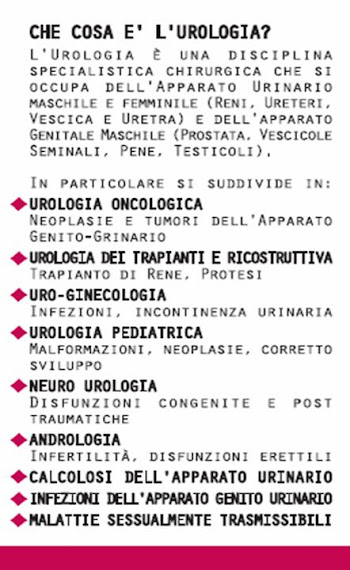EFFICACIA E SICUREZZA DELLA CORREZIONE TRANSVAGINALE DEL PROLASSO GENITALE FEMMINILE CON MESH PERIGEE-APOGEE SYSTEM: DATI A MEDIO TERMINE.
EFFICACY AND SAFETY OF TRANSVAGINAL MESH REPAIR OF SEVERE PELVIC ORGAN PROLAPSE WITH THE PERIGEE-APOGEE SYSTEM: MID TERM DATA
Hind A(1), Viola D(1), Pini G(2), Martino F(1), Rossi R(1), Martinelli A(1), Manoni L(1), Gualerzi C(3), Leoni S(1).
1. Unità Operativa Complessa Urologia, Arcispedale Santa Maria Nuova, Reggio Emilia,
2. Clinica Urologica, Università degli Studi di Modena e Reggio Emilia,
3. Unità Operativa Complessa Ginecologia ed Ostetricia, Arcispedale Santa Maria Nuova, Reggio Emilia
Hypothesis / aims of study
To determine the efficacy and safety of transvaginal mesh repair of pelvic organ prolapse (POP) using the Perigeeâ -Apogeeâ system with at least 18 months mean followup analysis.
Study design, materials and methods
A prospective and observational evaluation of 65 women (pts) with symptomatic POP (grade III or IV according to the Halfway System Baden Walker classification), operated on between January 2006 and December 2008, was made: 19 (29.2%) had anterior POP, 13 (20%) had posterior POP, 15 (23%) anterior and posterior POP, 17 (26.1%) had total POP (9 with uterine prolapse and 8 with vault prolapse). POP repair has been performed with the use of the tension free transvaginal mesh kits Perigeeâ-Apogeeâ (American Medical System, AMS), made of a polypropylene macroporous monofilament mesh: Perigee has been used to repair anterior POP, apogee to repair posterior and/or superior POP, whereas total POP has been repaired using both. Preoperative evaluation included history, pelvic examination, urine culture, abdominal ultrasound with postvoid residual volume and urodynamic study.
30 (46.1%) out of the 65 pts studied had urodynamic evidence of latent stress urinary incontinence (SUI) and underwent a concomitant TOT sling procedure, either Monarcâ or the adjustable one, Safyre â , while 4 (44.4%) of the 9 pts with uterine prolapse underwent concomitant vaginal colpohysterectomy. Follow-up visits were scheduled at 1 and 4 weeks, 3, 6, 12 and 24 months. The primary outcomes of our study were to assess the rate of POP recurrence, defined as de novo POP ≥ grade 1, subjective failure rate, defined as patient’s complaint of palpable prolapse, vaginal pressure or heaviness, and the secondary one was to determine the rate of complications.
Results
Mean follow-up was 18 months (range 3-36), mean age was 68 (range 50-85).
Objective failure rate was 1.6% (1/65) , subjective failure rate was 3.1% (2/65).
No intraoperative complications were recorded. In 4 pts (6.1%) a vaginal erosion occurred: in 1 the erosion was such that the removal of the mesh was done (anterior erosion in a 84 years old lady operated on for cystorectocele); conservative therapy was enough in the remaining cases: topic estrogenic therapy in 2 pts and partial removal of the mesh in 1 pt (anterior erosion; at 20 months followup no recurrence). Transient dyspareunia and pelvic pain were seen in 6 pts (9.2%) and in 5 pts (7.7%) respectively: both resolved in 3 months.
No cases of infection were recorded. 37.1% (13/35) of the pts not treated with a TOT developed a stress urinary incontinence and were subsequently treated with a transobturator sling.
Interpretation of results
Our results show that transvaginal mesh repair is a safe and effective procedure for the treatment of vaginal wall prolapse, irrespective of the fascial defect involved, with a low complications and recurrence rate.
In our experience, de novo IUS develops also in women with normal urethral pressure profile and, hence, we have modified our technique, always placing a concomitant adjustable suburethral sling.
Concluding message
POP transvaginal mesh repair is safe and effective. We suggest concomitant suburethral sling placement in all women to avoid de novo SUI.










Nessun commento:
Posta un commento